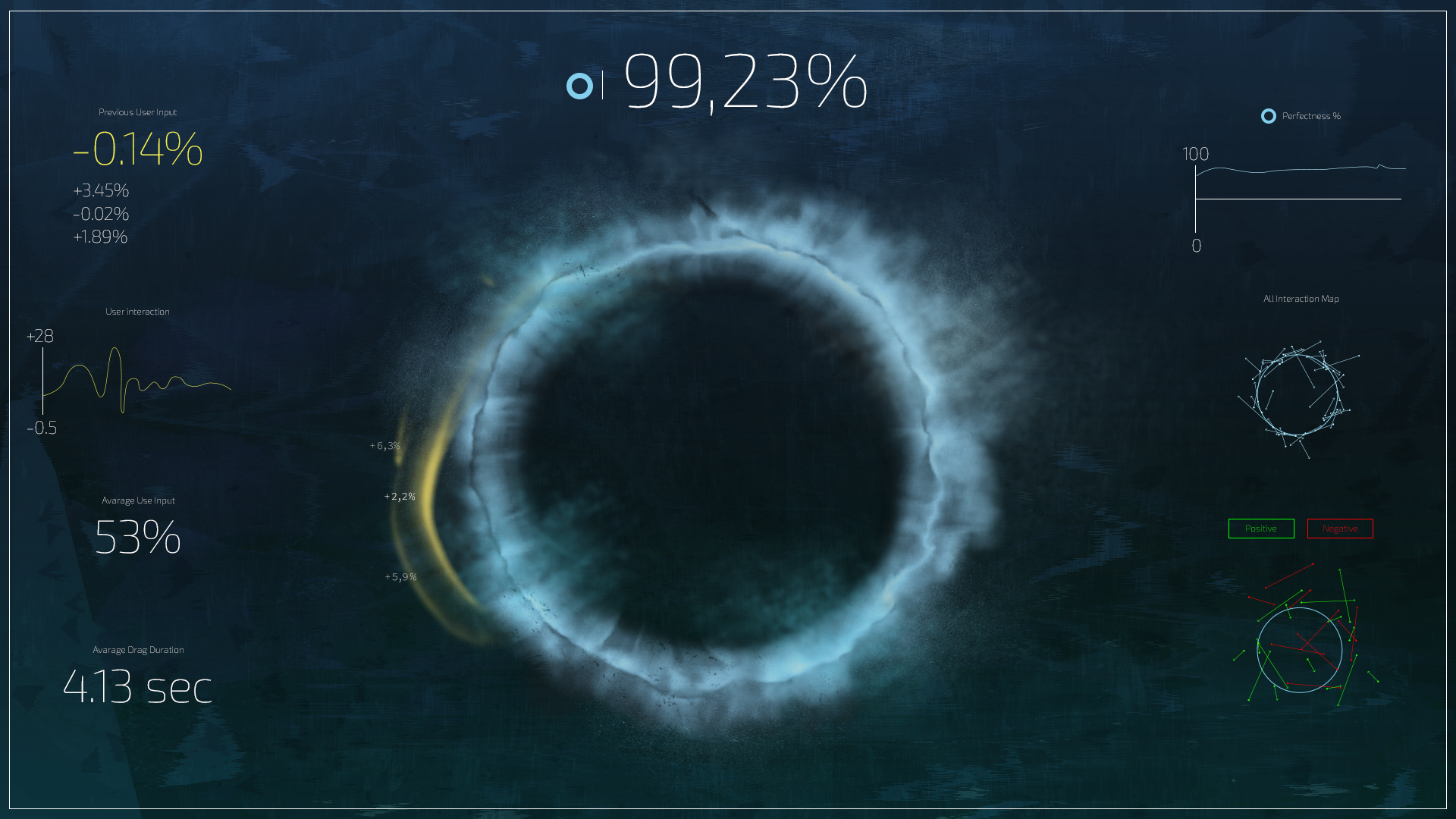Perfection
This interactive installation was made for Perfection, an exhibition by Science Gallery Melbourne. It is was also exhibited as part of In Praise of Perfection at the Science Gallery Dublin. In Melbourne, over the course of only eight weeks, the show was visited by almost 23,000 people.
Throughout history, the symbol of the circle has been associated with perfection in mathematics, art, and design. Circles are drawn digitally by squaring as a form of approximation. Mechanically or hand-drawn circles are not completely circular either. And yet, the Italian Renaissance painter Giotto proved his abilities to the Pope by effortlessly painting a seemingly perfect circle by hand. The challenge to draw a perfect circle has also been used as a meditative exercise in Zen Buddhism (see ensō circles), attempting perfection, but embracing the imperfection of the outcome. The aim of O is to make the circle perfect, but the notion of perfection is complicated by the interplay of the participant’s inputs, others’ inputs and the circle’s own dynamics. This creates a complex experience of perfection: one that is difficult to reach and depends on the participants to not disrupt the common effort, and once reached, may be lost again.

Perfect O
On startup, the installation shows a perfect circle (O) in the middle, with a number above it showing how perfect a O it is. People can interact with the O by touching and dragging around it to increase or decrease its perfectness. With time, its perfectness may go from the initial 100% to 68.4% to even 0.0% and back up to 99.8% and anything inbetween. On the two sides of the O, there are infographics and various pieces of information regarding the O and the recent interactions with it: graphs of recent interactions, the total number of interactions, their average effect, etc.



